|
Catalog number |
113211 |
Growth curve
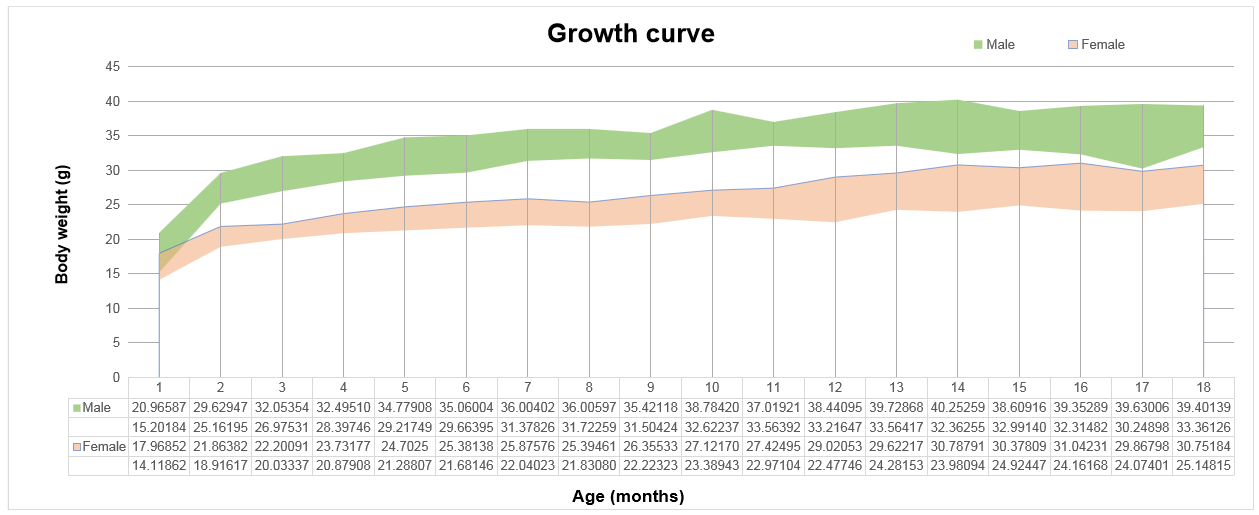
Growth curve of young and aged C57BL/6JNifdc mice. One-month-old mice were grouped (50 males and 50 females, respectively). Body weight was measured on the same day of every months and lasted for 17 months. The lowest and highest values of mouse body weight in the table were calculated from the mean ± SD.
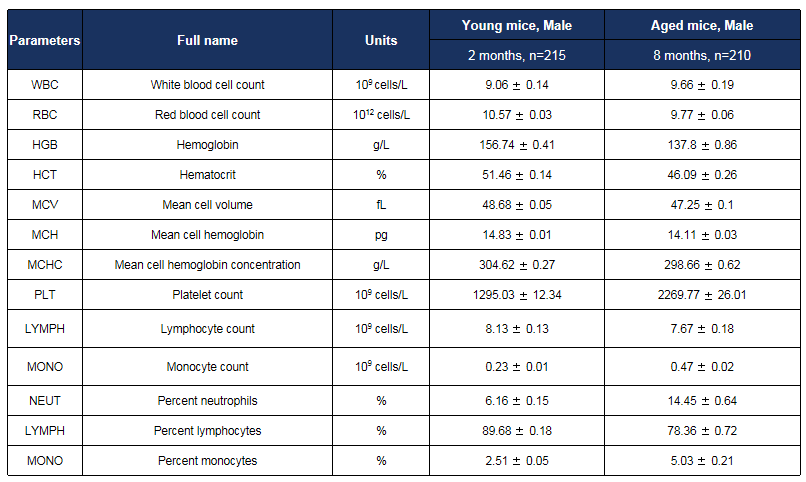
Complete blood count (CBC) of young and aged mice. Values are expressed as mean ± SD.
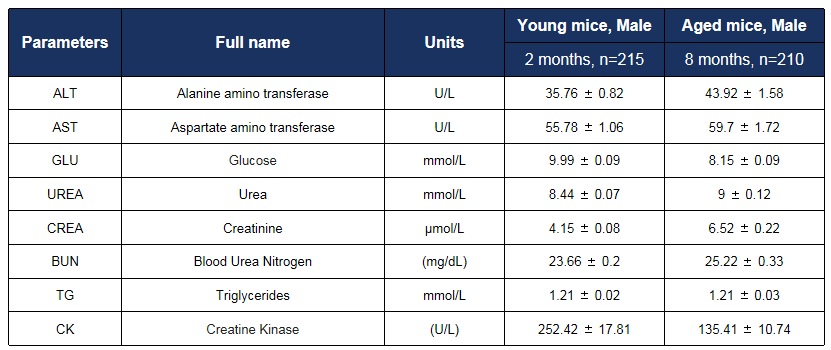
Biochemical test of young and aged mice. Values are expressed as mean ± SD.
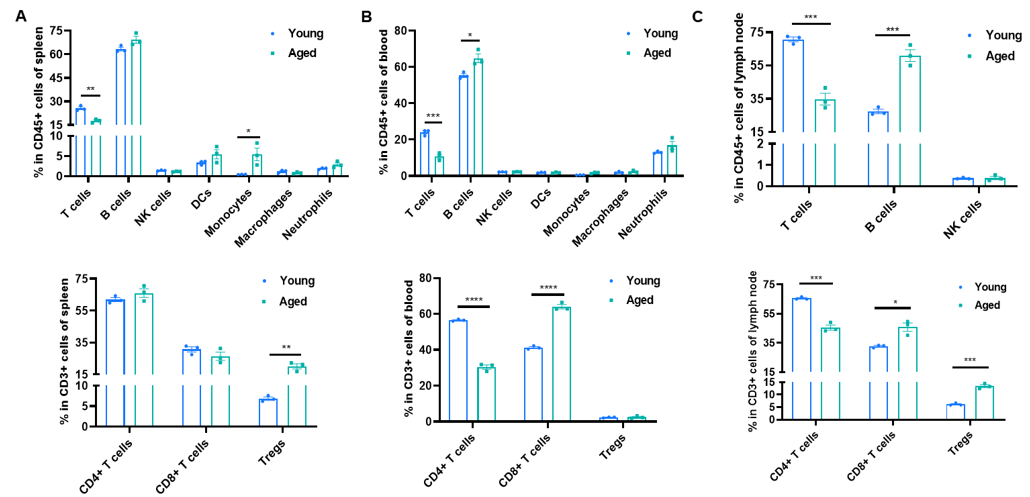
Analysis of spleen, blood and lymph nodes immune cell subpopulations by flow cytometry. Percent of T cells, B cells, NK cells, dendritic cells, neutrophils, monocytes, macrophages, CD8+ T cells, CD4+ T cells, and Tregs in the young C57BL/6J mice (n=3, 2-month-old) and aged C57BL/6J mice (n=3, 18-month-old), differentiation or distribution of these cell types in spleen(A), blood(B) and lymph nodes(C). Values are expressed as mean ± SEM. Significance was determined by two-way ANOVA test. * p < 0.05, ** p < 0.01, *** p < 0.001, **** p < 0.0001.
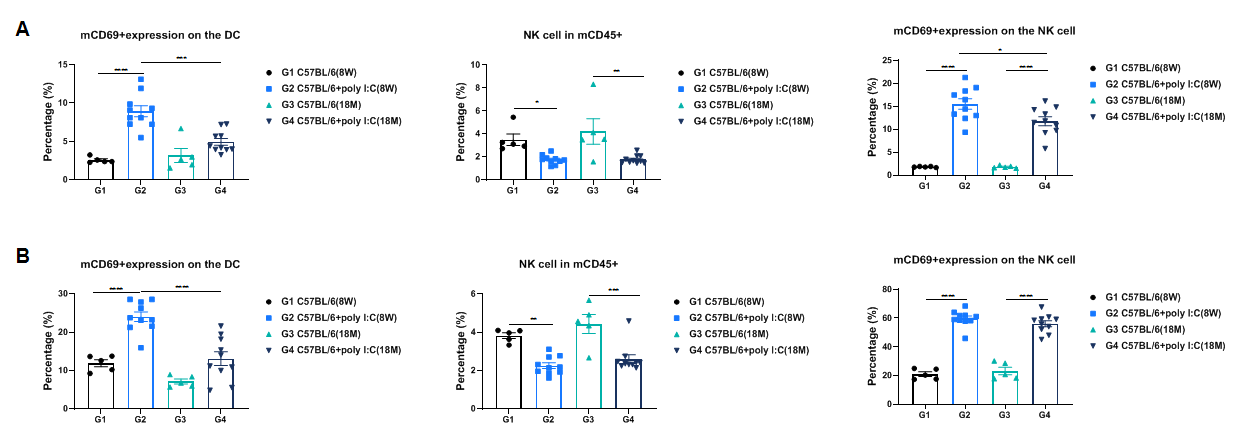
In Vivo Activation of NK. Poly I:C was injected into young and aged mice; 24h later, the expression of CD69 on blood(A) and splenic(B) DCs and NKs was examined. In old mice, a significantly lower percentage of DCs and NKs became CD69-positive after poly I:C injection.

In vivo activation of NKs and IFN-γ and granzyme expression. Poly I:C was injected into young and aged mice; 24h later, the expression of Granzyme B and IFN-γ on blood(A) and splenic(B) DCs and NKs was examined. In old mice, a significantly lower percentage of DCs and NKs became Granzyme B-positive after poly I:C injection. The percentage of DCs and NKs with IFN-γ lowered in the old mice compared with the young mice but there is no significance.
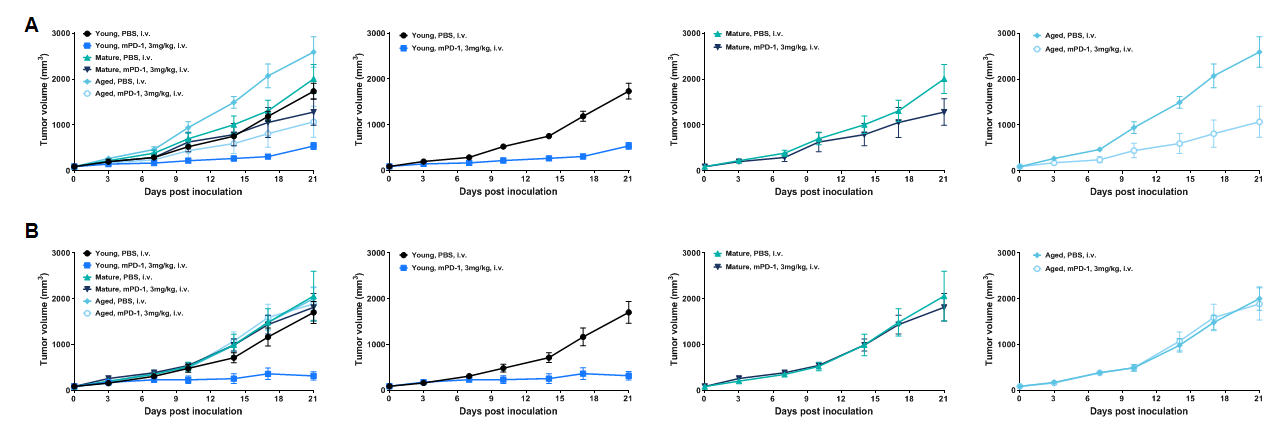
Impact on anti-PD-1 antibody response among the young, mid-aged and aged mice. Murine colon cancer MC38 cells (1E5)(A) and 5E5(B) were subcutaneously implanted into young, mid-aged and aged mice, respectively. Mice were grouped when tumor volume reached approximately 80~100mm3, at which time they were treated with PBS or anti-PD1. The anti-PD1 mAb could decrease the tumor growth in all age groups when the MC38 were implanted at 1E5, and the antitumor effect was greatest in aged group(A). However, when the inoculation dosage was 5E5, the anti-PD1 mAb only decrease the tumor growth in the young group while the anti-PD1 mAb didn’t decrease tumor in mid-aged or aged group mice(B).
Body weight between young and aged mice:
As age increases, mice show an upward trend in body weight.






 +86-10-56967680
+86-10-56967680 info@bbctg.com.cn
info@bbctg.com.cn